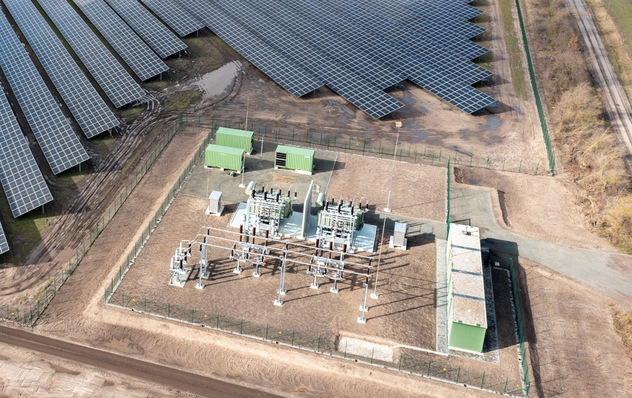How big does the solar system need to be for a farm? At what point does a battery storage system pay off? The partners in the Smartfarm 2 project want to find answers to these questions. A team of experts from the fields of artificial intelligence and optimisation, together with developers from the fields of measurement sensors and data transmission, are developing a software tool that automatically calculates the optimal dimensioning for a photovoltaic system or a battery storage system.
Lots of data collected
To do this, the project partners record high-resolution measurement data of the consumption in farms with the help of the measurement sensor technology of the control technology manufacturer Enerserve. Technicians from the University of Bremen collect this data in a database. Based on this, they then calculate what the optimal system size is for the respective farm.
This calculation is based on mathematical algorithms developed by researchers from the Optimisation and Control Group at the University of Bremen and the Steinbeis Innovation Centre for Optimisation, Control and Regulation.
Include all costs and prices
Various factors are taken into account, from acquisition costs and maintenance costs to electricity prices and inflation over the next 20 years. The technology company Q3 Energie contributes the data for these factors to the software. This is because Q3 Energie has gained a lot of data from its own projects in recent years, and the developers know how to translate this into concrete economic efficiency. Seasonal fluctuations in consumption and generation are also taken into account.
Software already tested
The software has already been tested on three real agricultural enterprises in the districts of Osterholz and Verden. An initial comparison with a conventional recommendation for a photovoltaic system and a battery storage system based on empirical values is very promising, the project partners summarise the results of this real-life test.
See also: Farmers opt for photovoltaics to cover their own demand
Now further demonstration plants are to be set up. This means that at least one measuring device is to be installed in these companies or municipal facilities that records the total electricity consumption. This recording can then be used to draw conclusions about individual consumers and individual generators by means of artificial intelligence.
Developing energy management
In addition, the recommendation software is to be further developed. In the next two years, the partners also want to develop an energy management system. The goal is to control an existing solar system - also with a storage unit - fully automatically so that as much of the self-generated electricity as possible is consumed on site during the course of the day.
Also interesting: The 5 most important trends in photovoltaics
What is new about the control system is that decisions are made dynamically and are not bound to fixed rules, as is the case in current energy management systems. This is because the systems in farms cannot be compared to a single-family home. The more complex the systems become, the sooner these rule-based systems reach their limits. The dynamic systems also have greater optimisation potential. (su/mfo)







